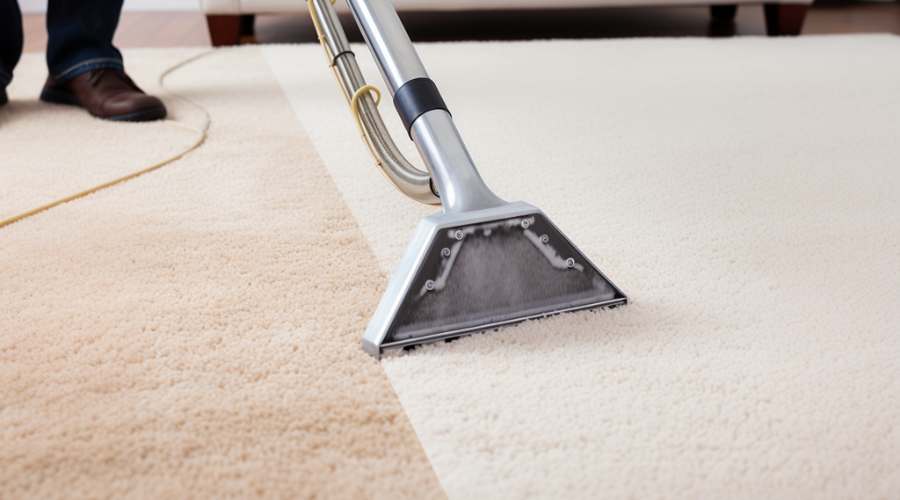
Dealing with water damage on carpets can be a stressful experience for any homeowner or business owner in Sydney. Whether it’s due to a burst pipe, flooding, or even just a spill that went unnoticed, acting quickly and effectively is crucial to minimize damage and prevent mold growth. In this guide, we’ll explore expert tips and techniques for water extraction from carpets, ensuring your carpets are restored to their pristine condition.
Understanding the Importance of Prompt Action
When water infiltrates your carpet, it doesn’t just sit on the surface; it seeps deep into the fibers and padding. The longer the water remains, the greater the potential for structural damage and mold growth. Prompt water extraction is essential to:
- Prevent Mold and Mildew: Moisture in carpets creates a breeding ground for mold, which can pose serious health risks and compromise indoor air quality.
- Preserve Carpet Structure: Excess water weakens carpet fibers and can cause them to break down over time.
- Avoid Odors: Damp carpets can develop musty odors that are difficult to eliminate.
Steps to Effective Water Extraction
1. Assessment of the Damage
Before starting the extraction process, assess the extent of the water damage. Determine the source of the water (clean, gray, or black water) and whether it has affected nearby walls or furniture. This assessment helps in planning the appropriate extraction method.
2. Safety First
Ensure safety by turning off electrical power to the affected area to prevent the risk of electrocution. If the water damage is extensive or involves contaminated water, consider wearing protective gear such as gloves and boots.
3. Remove Excess Water
The first step in water extraction is to remove as much standing water as possible using a wet vacuum or pump. Start from the furthest point of the room and work towards the exit to minimize spreading water to unaffected areas.
4. Utilize Air Circulation
Promote drying by increasing air circulation within the room. Open windows and use fans to enhance airflow. This helps in evaporating residual moisture from both the carpet and the underlying padding.
5. Utilize Dehumidifiers
Dehumidifiers are effective in reducing humidity levels in the room, aiding in faster drying of carpets and preventing mold growth. Place them strategically based on the size of the affected area for optimal results.
6. Steam Cleaning
Once the majority of the water has been extracted, consider steam cleaning the carpet. This not only helps in removing residual moisture but also sanitizes the carpet fibers, eliminating bacteria and odors.
7. Professional Assessment
For extensive water damage or if you’re unsure about handling the extraction process yourself, it’s advisable to seek professional help. Certified water damage restoration experts, like those at Master Carpet Cleaning, have the necessary equipment and expertise to thoroughly dry and restore your carpets.
Why Choose Master Carpet Cleaning?
When it comes to water extraction from carpets in Sydney, Master Carpet Cleaning stands out as a reliable and professional service provider. Here’s why you should consider hiring us:
- Expertise and Experience: With years of experience in carpet cleaning and water damage restoration, we understand the intricacies of effective water extraction.
- Advanced Equipment: We use state-of-the-art equipment for thorough water extraction and drying, ensuring your carpets are restored to their pre-damage condition.
- Comprehensive Services: Beyond water extraction, we offer a range of services including steam cleaning, stain removal, and odor treatment to leave your carpets looking and feeling fresh.
- Customer Satisfaction: Our commitment to customer satisfaction drives us to deliver exceptional results every time, backed by a satisfaction guarantee.
- Emergency Response: We offer 24/7 emergency services in Sydney, so you can count on us to be there when you need us the most.
Conclusion
Effective water extraction from carpets requires prompt action and the right techniques to prevent further damage and ensure a quick recovery. By following the expert tips outlined in this guide, you can mitigate water damage and preserve the integrity of your carpets. For professional water extraction services in Sydney, trust the experts at Master Carpet Cleaning. Contact us today to learn more about how we can help restore your carpets to their pristine condition.
Remember, when it comes to water extraction and carpet cleaning in Sydney, Master Carpet Cleaning is here to provide reliable and professional service. Don’t hesitate to reach out for assistance with your water damage restoration needs.